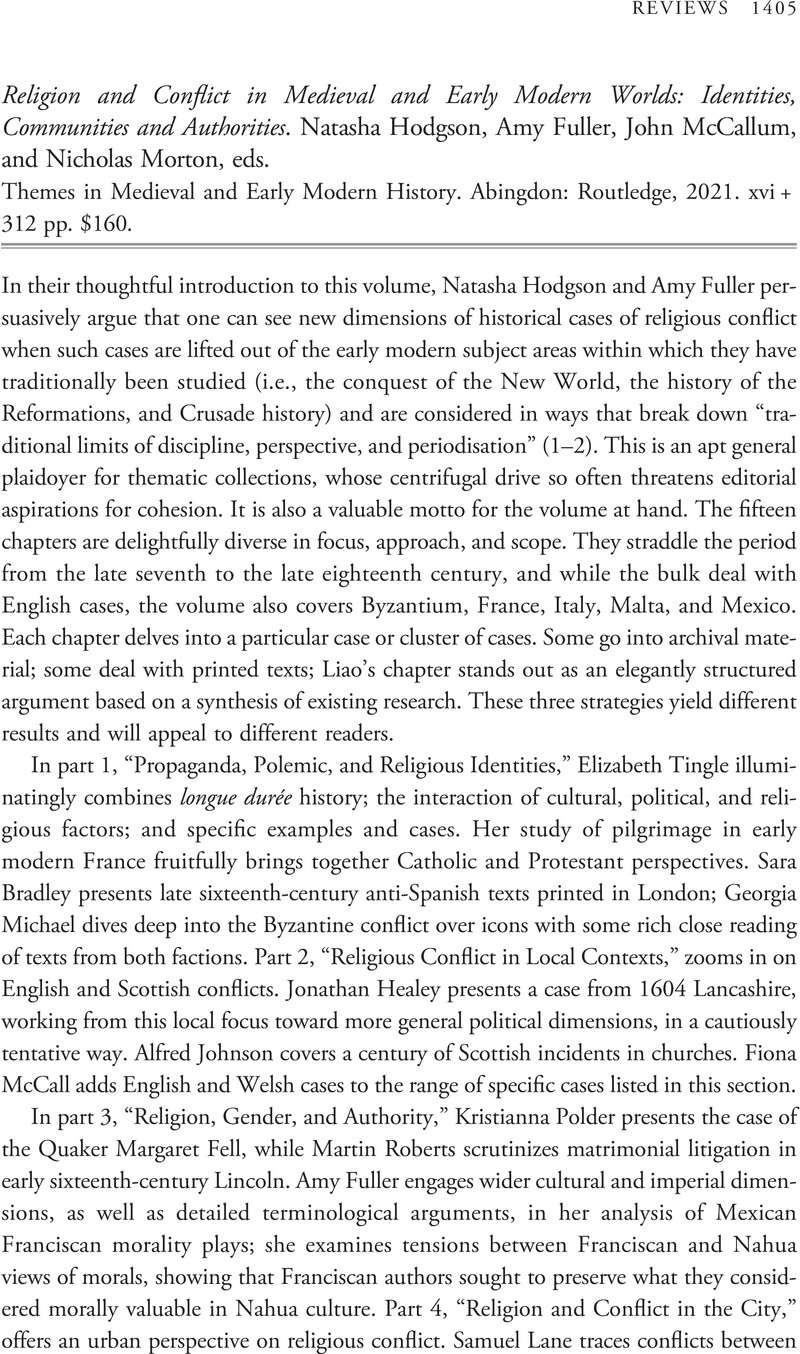No CrossRef data available.
Article contents
Religion and Conflict in Medieval and Early Modern Worlds: Identities, Communities and Authorities. Natasha Hodgson, Amy Fuller, John McCallum, and Nicholas Morton, eds. Themes in Medieval and Early Modern History. Abingdon: Routledge, 2021. xvi + 312 pp. $160.
Review products
Religion and Conflict in Medieval and Early Modern Worlds: Identities, Communities and Authorities. Natasha Hodgson, Amy Fuller, John McCallum, and Nicholas Morton, eds. Themes in Medieval and Early Modern History. Abingdon: Routledge, 2021. xvi + 312 pp. $160.
Published online by Cambridge University Press: 09 January 2023
Abstract
An abstract is not available for this content so a preview has been provided. Please use the Get access link above for information on how to access this content.

- Type
- Review
- Information
- Copyright
- Copyright © The Author(s), 2022. Published by the Renaissance Society of America



